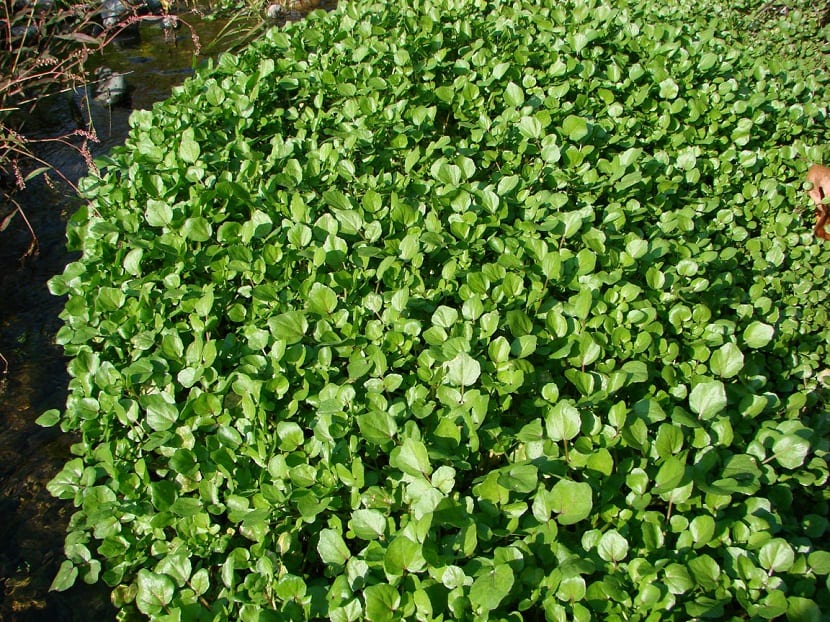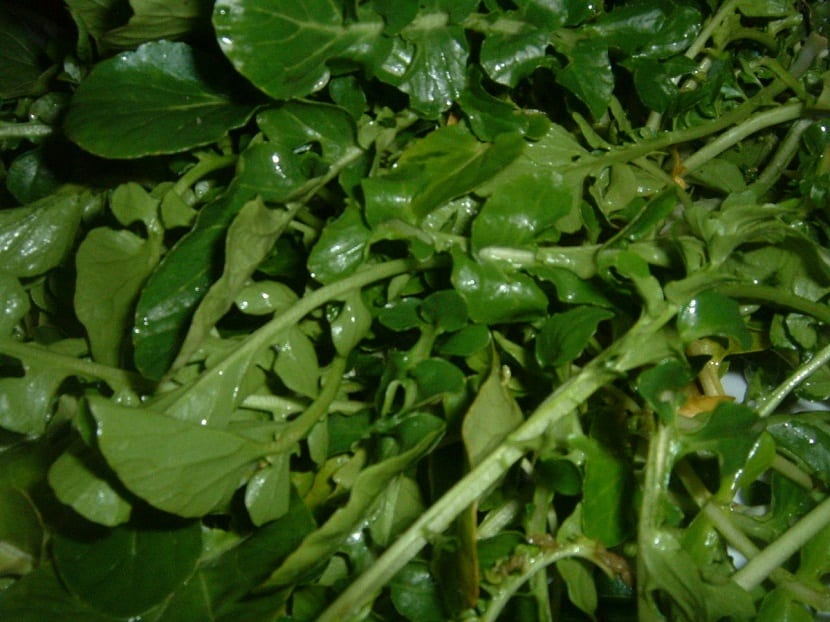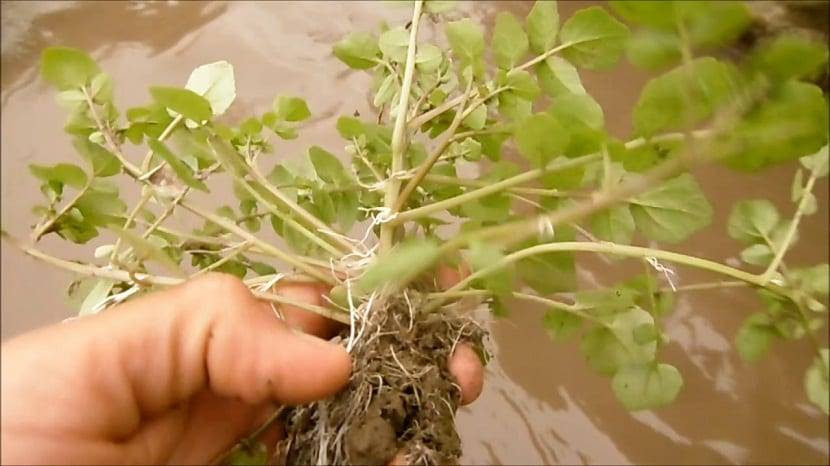
The Nasturtium officinale or better known as the watercress, it is an aquatic plant that usually grows in streamss, the sources or also in the clean waters that are on the banks of the streams, but that in the same way is a plant that we can cultivate.
Nasturtium officinale characteristics

Watercress is a plant that can grow to between 10 and 50 m, with a stem that is quite soft and covered with many branches. The leaves of this plant have an elongated appearance shaped like oval, which also has some projections that are quite marked.
Watercress flowers can be yellow or white. and these have four sepals, six stamens, four petals and a pistil that is unique, found in groups of inflorescences that are axillary as well as terminal. On the other hand, the fruit that watercress produces has an appearance that is long as well as thin, with seeds that are used to season food when cooking.
The moment the flower buds open, the leaves are usually pinnate as well as alternate, which also take a flavor that is pungent and being this way they cannot be used as a condiment.
Nasturtium officinale care
If we want to grow watercress it is necessary that we bear in mind that this is a plant that requires growth in an environment with high humidity, as well as with plenty of shade, although it prefers a climate that is warm and also cool.
When it comes to planting them we need to avoid areas with direct sunlight and if we have no other alternative, we have to be very careful and irrigate with plenty of water so that in this way the earth remains moist at all times.
The soil indicated for this plant has to be clayey, with abundant humus and also alkaline. We can place the seeds directly on the ground or we can also place them inside a pot to later transplant them in a humid area. For that we have to mix sand that is limestone, earth in equal parts and organic fertilizer.
The watercress, for being a aquatic plant, it needs a large amount of water to have an excellent development and it is for this reason that we have to irrigate abundantly throughout the cycle.
If it is the case that we have this plant in a pot, it is recommended that we place the receptacle in a base and add the water to in this way make moisture stay, by changing the water every day to avoid the appearance of fungi as well as mold.

Between what are the diseases and the most common pests that can cause damage to watercress are the snails, which are those small sucking insects as well as chewing insects and there is also the watercress vaquita, which is a fairly small beetle, measuring only half a centimeter or even less and of one color something black, which feeds on the leaves that are tender and causes quite serious damage.
When pruning the watercress, it is best to trim the shoots that are apical so that in this way the plant has a bush-like growth. On the other hand, it is best to cut the flowers when the flowering season arrives, since if this happens, the plant takes on a flavor that is not very pleasant.
The indicated time to harvest is between one and two months after we have planted the plant, being something quite simple. For that we only have to remove the shoots that are on the sides of the watercress at the time it is needed.
It is a plant that we have to harvest by hand when it already has a height of between 10 and 15 centimeters and at the moment that its leaves reach the maximum size but are not hard. We have to avoid removing the roots by making a cut about 5 cm from the top of the soil.